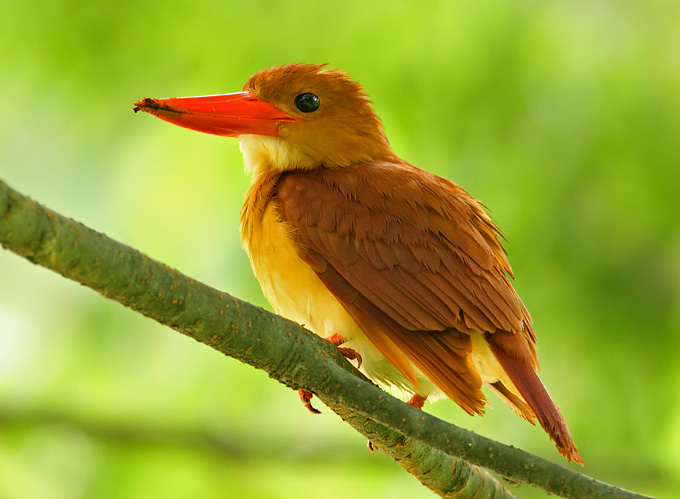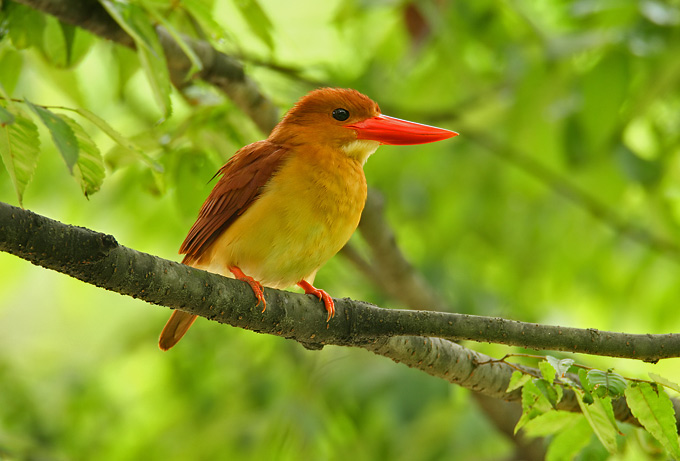 | E-mail to Birds Korea |
 | KWBS |
in the Region
 | The Oriental Bird Club |
 | BirdLife International (Asia) |
June
Often hot (temperatures up to 30°C or more inland) and humid, with very heavy rains some years by mid-month.
By early June, Yellow and the rare Schrenk’s Bittern are breeding in the least disturbed reed-beds, and Watercock give their (slightly comical) gulping calls in a few rice-field areas. Nesting activity in Black-faced Spoonbill and Chinese Egret colonies peaks, and forest nesters are still vocal, especially in the first half of the month. At Gwangneung, typical species include 4 species of woodpecker, Ruddy Kingfisher, Yellow-rumped Flycatcher and Mandarin Duck, while on the south coast at Geoje Island Pale Thrush, Blue-and-white Flycatcher and Yellow-throated Bunting predominate. Black Woodpigeon nest on Gageo and other islands and Styan’s Grasshopper Warbler are widespread on small islets. Although not usually considered a month for migration, June has nevertheless provided some national firsts in recent years, with a Lesser Coucal in 2005, Malayan Night Heron in 2006, and a Roseate Tern at the Nakdong estuary in 2008.
(The following records are a compilation of our own sightings and records sent in by other observers. As well as being posted on the Birds Korea website(s), selected records are also forwarded to other Korean-language birding websites; records of threatened species are arranged and forwarded to Birdlife International and national authorities when appropriate; flag images and records are passed to bodies responsible for their coordination throughout the flyway; and all records sent to us are used to compile annual reports and to support the evolving understanding of the status of many of Korea’s birds.)
Namsan, June 30
Due to inclement gray weather, the morning was turning out rather depressing. That was until I almost literally walked into a large tree that was hanging out over a walking path. I froze after hearing what seemed to be vocalizations of at least 4-5 fledgelings. They lived in a hollow whose entrance was a small hole where a branch once was. I did manage to capture a Great Tit frantically making 4-5 sorties for food. Other than this 'excitement' I saw 4 Rufus Turtle Dove, 2 Great-Spotted Woodpecker, 3 Black-naped Oriole, 2 Ring-necked Pheasant, and 2 Eurasian Nuthatch.
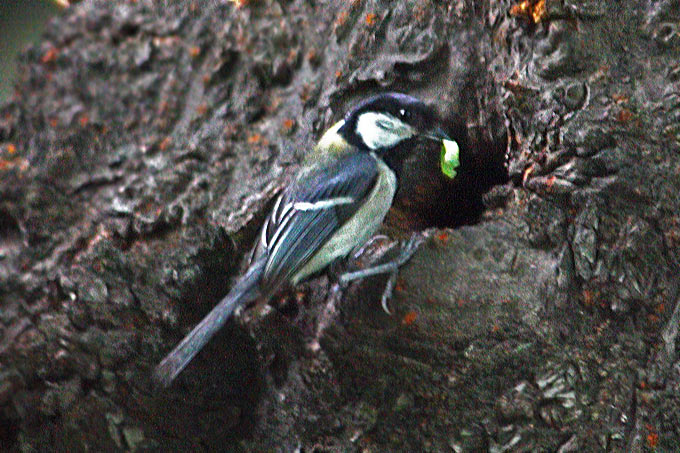
Gageo Island, June 25/26-28
In hot and humid conditions (great for leeches and not so great for finding birds!) a survey of Gageo’s breeding and oversummering birds, covering the whole island. In total, 32 species logged,with most numerous including Brown-eared Bulbul (160+), Japanese Bush Warbler (140+) , Japanese White-eye (112) and the richly-colored, rufous-faced Varied Tit (39), as can be seen in the image taken on Gageo in May. Migrant or oversummering species of most note included single Yellow Bittern and Long-tailed Shrike (latter perhaps the national second oversummering record?), 3 or 4 Light-vented Bulbul, single Asian House Martin and House Swift (both on 27th) and the personal first returning Common Sandpiper of the autumn (on 28th), while species of highest conservation concern included c35 Black Woodpigeon seen or heard (plus an additional dead individual, with bright pink-tinged crown feathers), and c32 Styan’s Grasshopper Warbler (singing in territories from 10 m asl to 200 m asl).
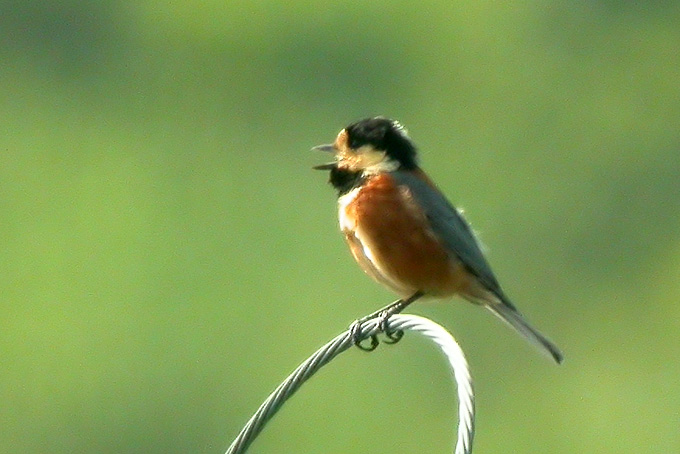
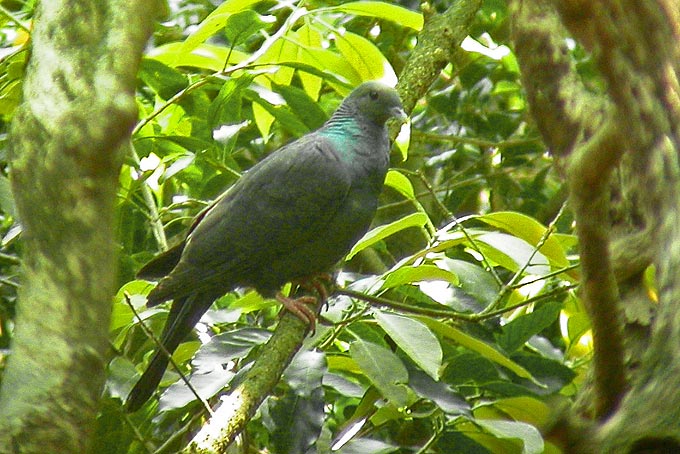
Jeju island, June 28
I had the pleasure of accompanying Young-Ho Kim and one of his colleagues as they did field research on nesting Black Paradise Flycatchers. This work included putting up warning signs that spelled out the harsh penalties that await anyone caught robbing the nests. The only recent nest robbing appears to have perpetrated by a Large-billed Crow. We got spectacular long looks at several pairs, as well as good views of 4 nests, which were mostly suspended over the sides of steep valleys. Several Fairy Pittas were heard, but remained frustratingly unseen.
About a dozen Yellow-throated Bunting, a Yellow-browed Bunting, a male Blue and White Flycatcher and a nearby juvenile were also seen. A White’s Thrush was heard, as were many Lesser and Common Cuckoos. Several White-backed Woodpeckers noisily worked at producing a steady hail of tree debris from above!
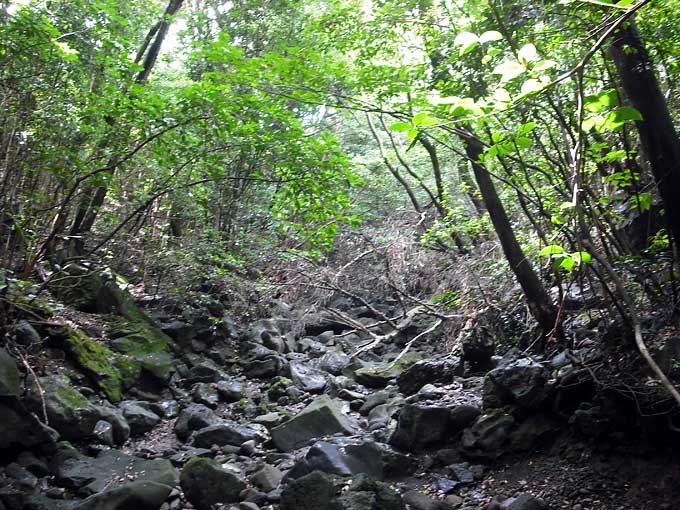
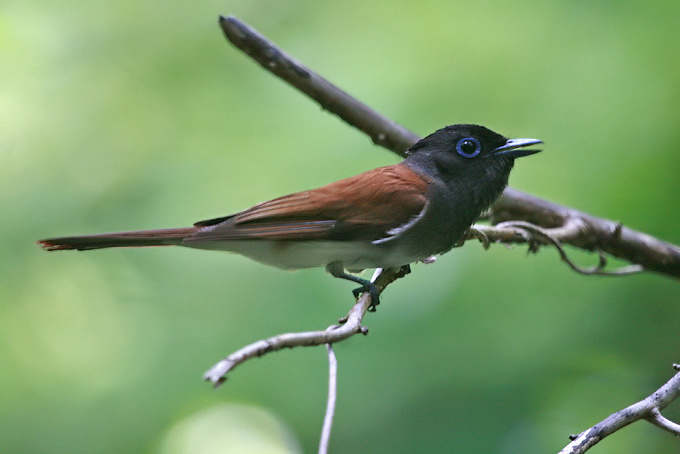
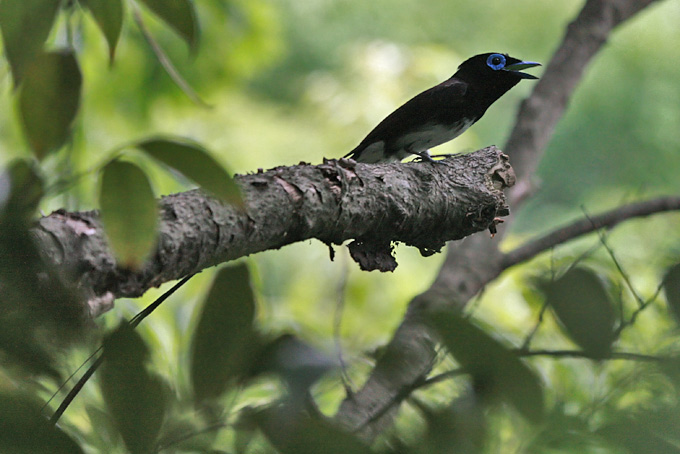
Seoraksan, June 27

Photo © Robin Newlin
A 5-6 hour walk up the mountain (with camera, unfortunately) in a futile search for Nutcrackers yielded the following compensations, many heard only: Radde’s, Dusky, Eastern Crowned and Pallas’ Leaf Warblers, Scaly and Grey-backed Thrushes, Black-naped Orioles, Asian Stubtails, 3 Northern Hawk Cuckoos, a single White-throated Needle-tailed Swift, brief views of a Ural Owl, and hundreds of Chipmunks.
Gangwondo, June 26
An afternoon stop (sans camera, unfortunately) at a village in Gangwondo yielded one unexpected highlight: excellent views of a Collared Dove associating loosely with some Oriental Turtle Doves.
Gageo Island, June 25
Extremely poor for seabirds on the ferry from Mokpo apart from close to Gageo itself, where 10 Swinhoe's Storm Petrel, with the only other species of note a group of 5 Eastern Great Egret heading east across the sea. On the island, because of the hot and humid conditions and construction noise, only a couple of hours in the evening walking the 1-Gu circuit. As on Socheong, some White-cheeked Starling (c 15) and Brown-eared Bulbul, but otherwise little overlap in species, with e.g. two Little Cuckoo, still a dozen or more highly vocal Japanese Bush Warbler, and in addition an Eastern Great, at least 8 Eastern Cattle, 3 Little, and 4 Intermediate Egrets - all failed breeders or late migrating (immature) non-breeders? Further species of note included one or two White-breasted Waterhen, 2 or 3 Light-vented Bulbul and happily between 8 and 10 rather vocal and at times showy Styan's Grasshopper Warbler.
Yeongjeong Island, June 25
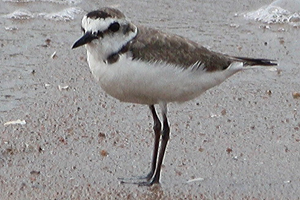
Photo © Joseph Bieksza
A relatively quiet morning along the west coast of the island.IIt seems there are, already underway, major plans to create either a four or six lane highway along the current two lane road to Eulangri beach. Major habitat is already decreasing rapidly and I imagine skittish avian varieties will avoid the traffic and new bustling businesses. I did manage to view 50 Black-tailed Gull, 1 Chinese Egret, 16 Barn Swallow, 2 Kentish Plover, 1 Little Ringed Plover, 8 Grey Capped Greenfinch, 40 Far Eastern Curlew, 1 Eastern Oystercatcher, 4 Black-naped Oriole, and 1 Common Cuckoo.
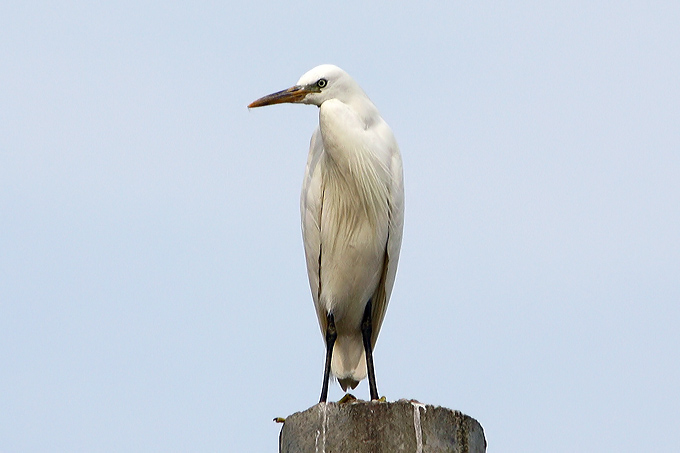
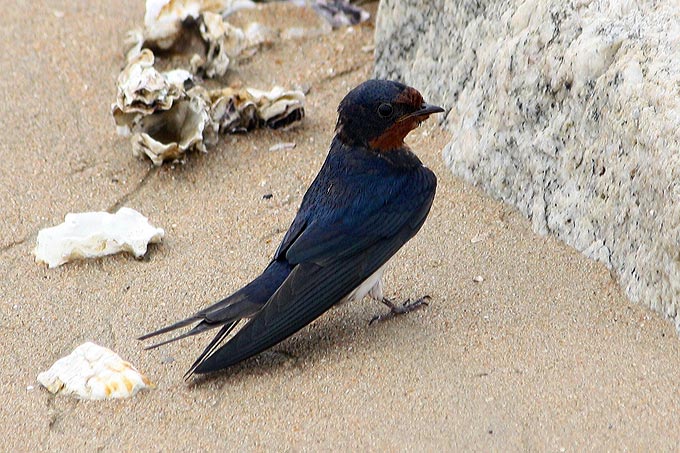
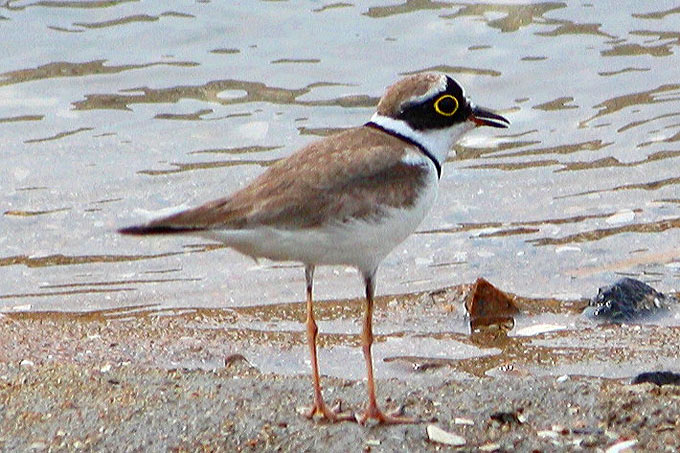
Socheong Ferry, June 24
This is a supplement to N.M.’s (much more exciting) report of the 23rd and 24th: a brief description of a brief encounter with an apparent Gull-billed Tern. I.D. of the species is usually straightforward, but a combination of timing, angles, and diverging high velocities lie behind the qualifier. The tern was seen about 50 minutes southeast of Socheong, relatively close but (for the most part) flying away from the boat, first obliquely then veering to fly away and parallel to our wake. It appeared large and distinctly broad winged with a relatively heavy and deep wing beat (these points in comparison, for instance, with Common Terns, also seen on the same trip but near Incheon). Tail appeared short but I didn’t get an ideal view. Head looked large and blocky with a heavy black cap; bill (a very brief side view) appeared thick, short and black. Overall plumage was strikingly pale or frosty looking; mantle and wings appeared white or near-white; no apparent dark on the primaries.
Socheong Island, June 23-24
As part of ongoing Birds Korea research on the avifauna of West Sea islands, a quick return visit to survey summering and breeding birds on Socheong in fairly hot and humid conditions. From the ferry, Black-tailed Gull was the only species seen during the outward journey, with best on the return trip being the personal first Swinhoe's Storm Petrel of the year (although Robin Newlin also saw an apparent Gull-billed Tern on 24th - an outstanding highlight on almost any other day...). On Socheong itself, presumed summer residents included 4 Light-vented Bulbul and two Styan's Grasshopper Warbler, singing White's Thrush (1) and Korean Bush Warbler (c10), several freshly-fledged Pelagic Cormorants, and e.g. rather more widespread Blue Rock Thrush and Meadow Bunting. Despite timing the visit to avoid migrants (!), presumably late spring migrants included a single Dark-sided Flycatcher on the 23rd and singing Arctic Warbler (2) and Oriental Reed Warbler (1) on 24th. In addition, easily the most numerous species was White-cheeked Starling, with c 500 noted, including a flock of 250 at the lighthouse (many of which were juveniles) - easily the highest count to date of the species on the island, and strong evidence that post-breeding dispersal/southward migration has already started! As if these were not enough, three or four hours in the afternoon in the east of the island on the 23rd produced several bursts of anxiety/excitement. The two that "got away" were a medium or large dark (black or blackish) cuckoo sp. that flushed off the road, and was glimpsed a second time moving through the forest; and a martin sp that while Sand Martin-like in plumage appeared neat, rather Asian House Martin like in structure (with a shallow tail fork - but how shallow?), and several very striking plumage features, including a very pale mantle and rump, and upperwing coverts contrasting with darker flight feathers etc. Neither were seen again on the 24th. Easily the outstanding highlight therefore remained Korea's (and East Asia's?) first Ashy Woodswallow, found and photographed on the 23rd as it sallied to catch flying insects, and and seen again when also twitched (!) by the indefatigable Drs. Kim Shim Hwan and Robin Newlin on the 24th.
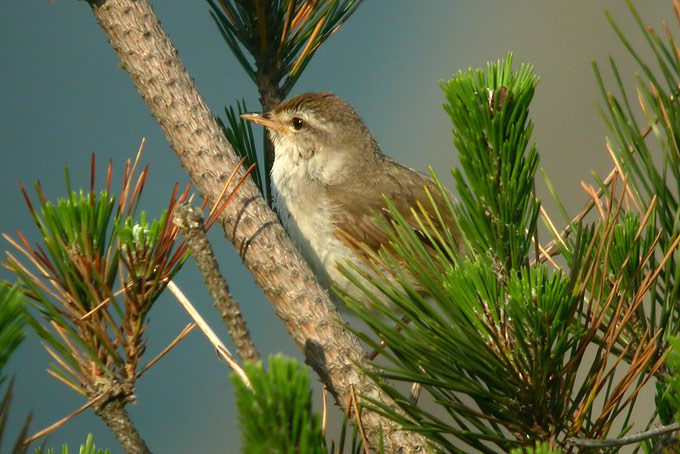
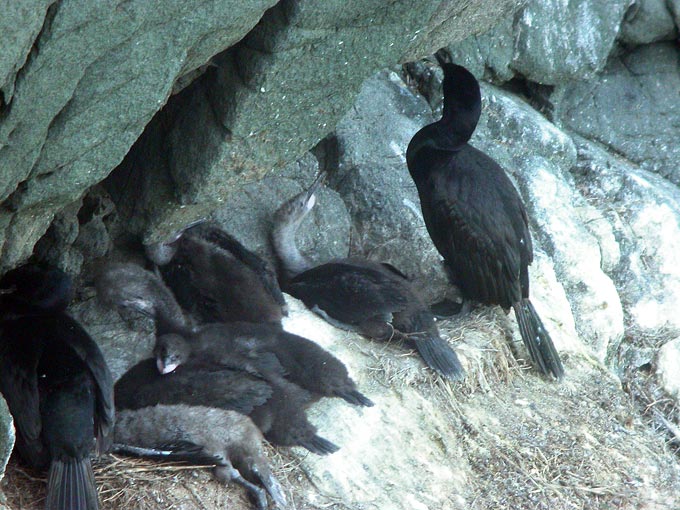
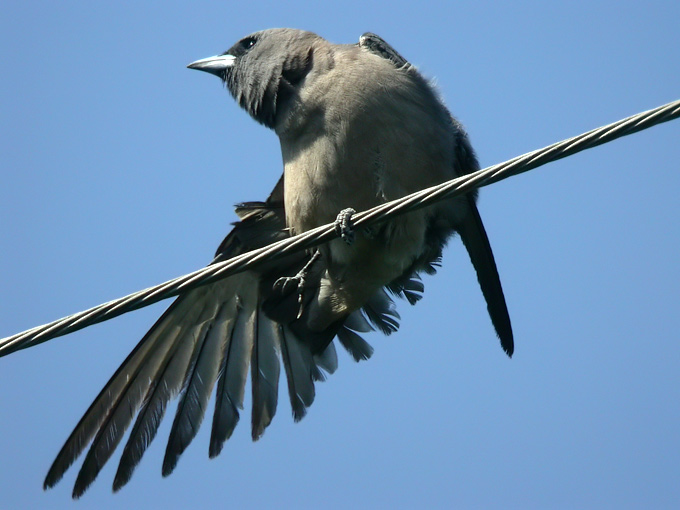
For more images and a sound recording please go to: http://www.birdskorea.or.kr/Forum/Records/5026
Gwangyang, June 21
The Flock of Fork-tailed Swift still present and seen from my apartment.
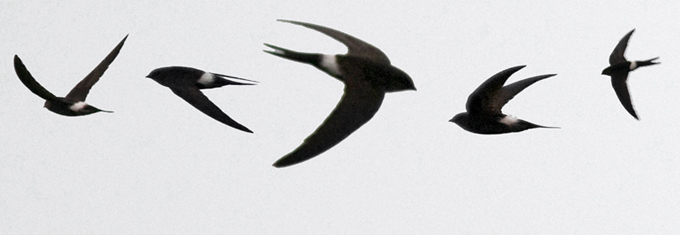
Cheollabuk-do, June 13
An afternoon journey through west-central Korea found some typical summer residents: 4 or 5 Black-naped Orioles, 1 each of Japanese Pygmy, Greater Spotted and Grey-headed Woodpeckers, 12 Azure-winged Magpies, a Hobby, single Bull-headed and Thick-billed Shrikes, a roving family of Long-tailed Tits, 2 Common and 1 Indian Cuckoo, a calling Korean Bush Warbler and a calling Black-capped Kingfisher; best of all (and not quite typical) a pair of Black Paradise Flycatchers, the male seen well and the female obscurely photographed.
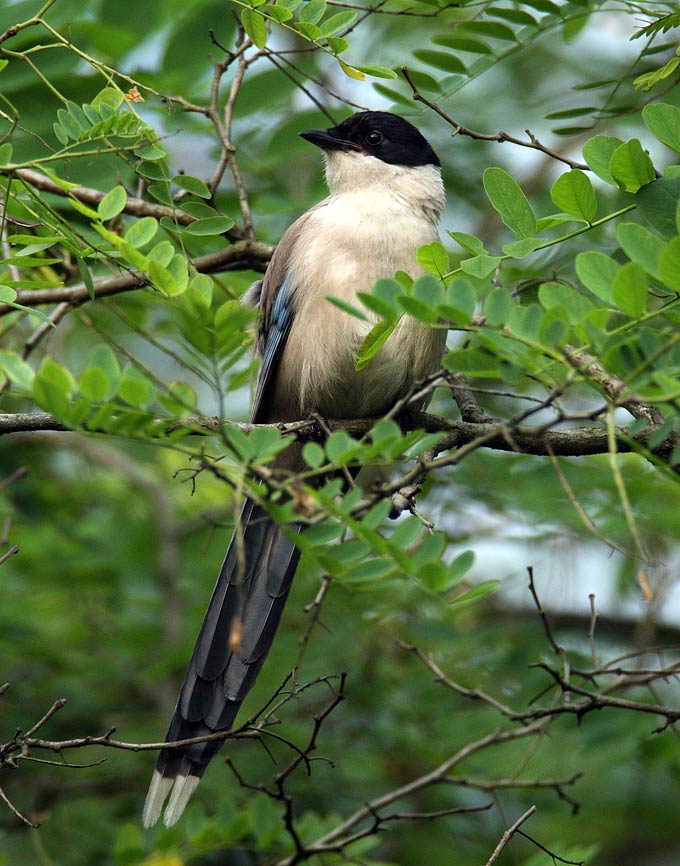
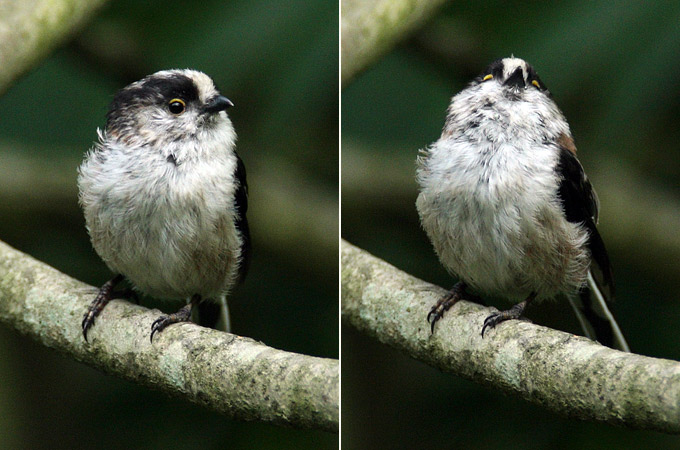
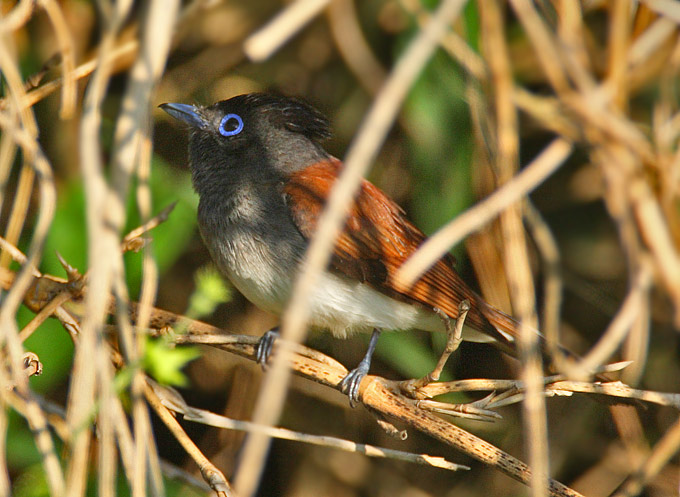
Gwangyang, June 13
A Flock of 23 Fork-tailed Swift seen flying over in the late afternoon.
Yangsu Reservoir and Seogwipo, Jeju Island, June 8
A mostly overcast and warm morning at Yangsu reservoir. Fairly quiet overall on the bird front, but 3 massive circling Cinereous Vultures were great to watch. A Peregrine also circled over the water, but much lower. Several Little Grebes in Summer plumage dove on the reservoir, while Little and Intermediate Egrets paced the shoreline. Two vocal Common Cuckoos shared a stand of pines with an elusive Lesser Cuckoo.
While showing some friends Cheonjiyon falls in Seogwipo, I spotted two uncharacteristically bold Mandarin ducks waiting for tourist handouts alongside Spot-billed and domestic ducks. Perhaps a liking for the easy handouts explains why they’re still here in June? One of the Mandarins was looking scruffy as it started to moult into eclipse plumage. Several Spot-billed chicks kept up with the pack.
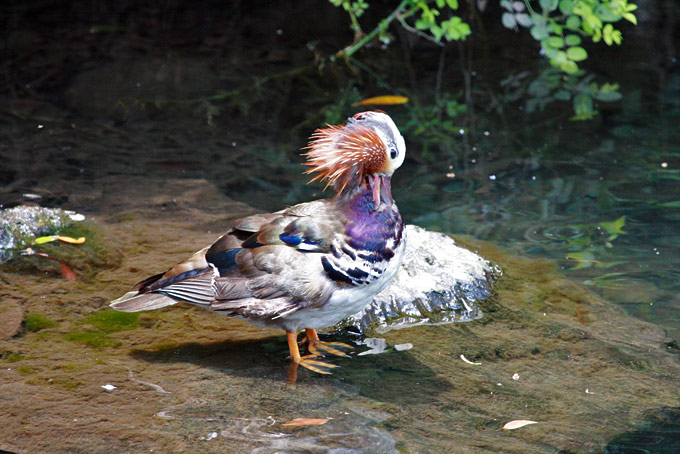
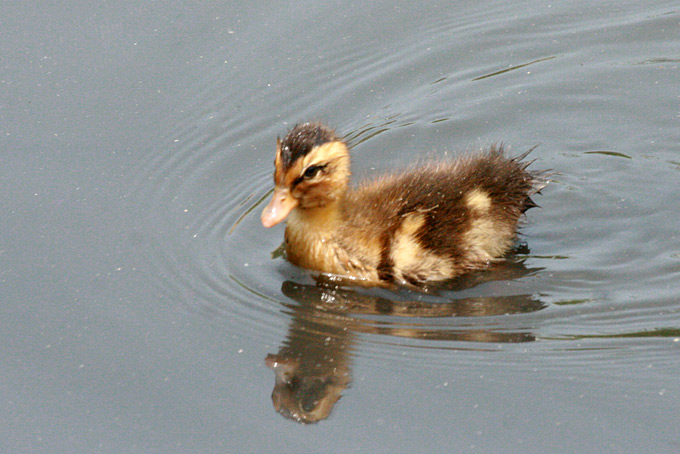
Songdo, June 7
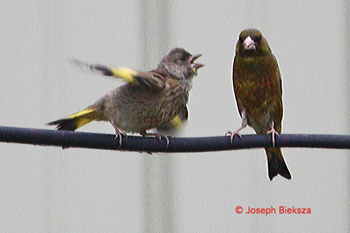
Photo © Joseph Bieksza
It was a rather gray depressing morning at the lagoon area. Much of the stagnant water contains enormous black floating sledge that stinks bad. A good number of Mongolian gulls seemed rather playful while the ever-growing Black-Faced Spoonbill families were quiet at rest. I also managed to spot both a lone Moorhen and Coot. On the northern side of the lagoon, where there is now a large footpath, 6 Spot-billed duck nervously watched curious walkers. My personal sendoff home consisted of 2 Brown-eared bulbul and 6 Grey-capped Greenfinch.
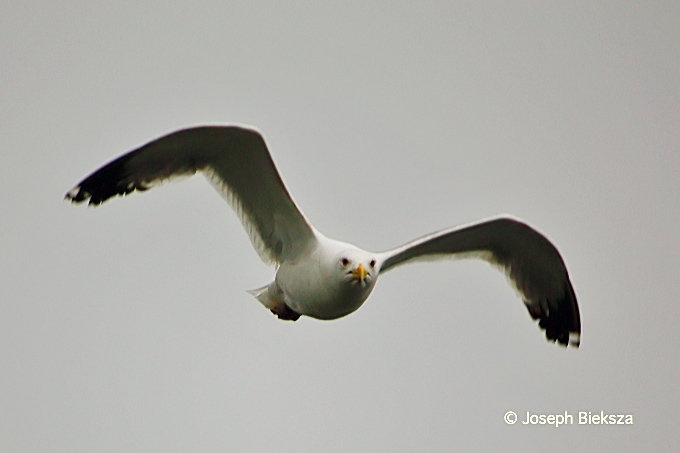
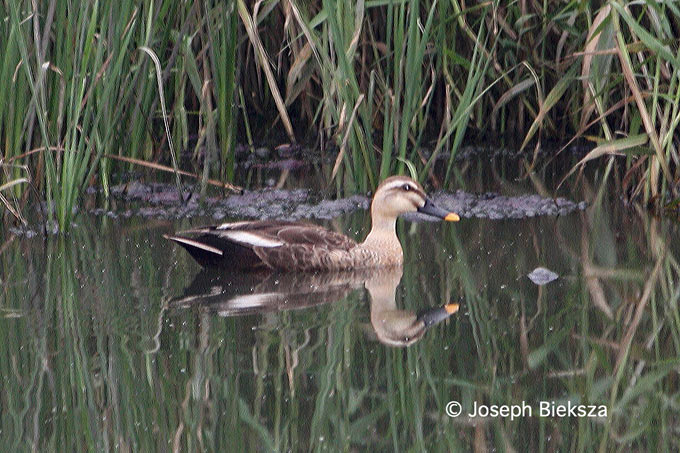
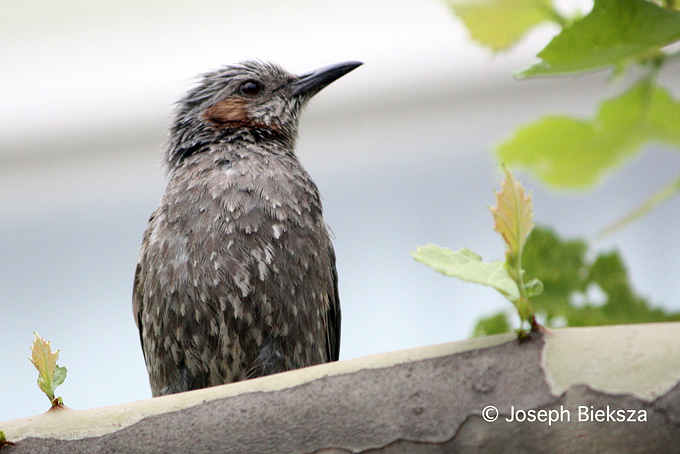
Northeast Seoul, June 7
A morning around neighborhood sites with my neighbor and fellow birdwatcher Mr. Im Kwang-Wan: in light rain, a stop at a grassy stream yielded 2 Japanese Wagtails, 2 Common Kingfishers, 2 Common Sandpipers, a Hobby, a Kestrel, a Chinese Sparrowhawk, calling Common and Indian Cuckoos and Black-naped Orioles, a calling Chinese Yellow Bittern, a flying Black-crowned Night-heron, several Intermediate Egrets, perhaps more but mostly invisible Vinous-throated Parrotbills, and a Ruddy Crake. Another stop yielded a calling Hoopoe and a flock of some 20 Long-tailed Tits.
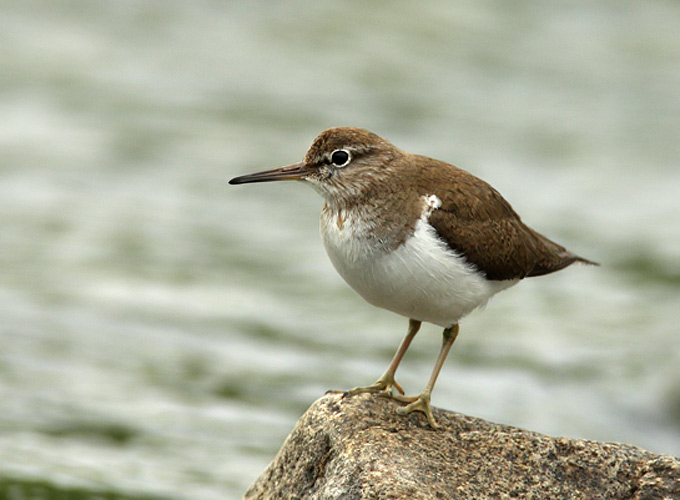
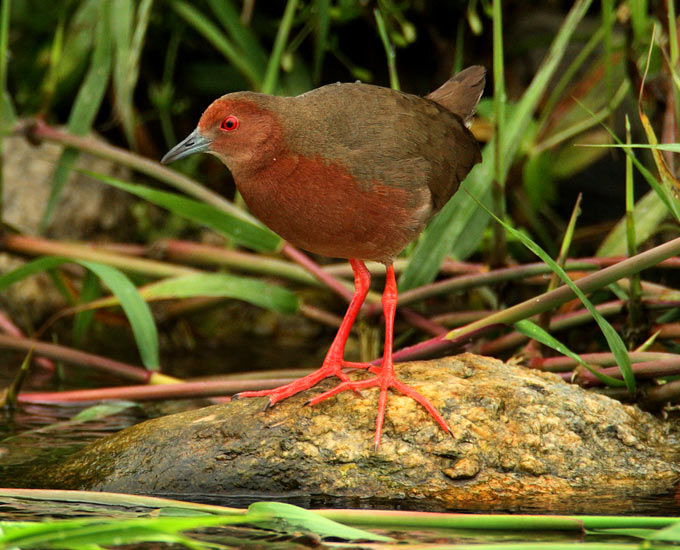
Uiwang, June 6
At the blissfully peaceful reservoir today, a Schrenck’s Bittern is in territory, as well as a Yellow Bittern: otherwise noteworthy, the somewhat comical sight of 13 Mandarin perched in a large willow tree, with further female escorting a brood of four chicks below.
There is at least one family of Great Crested Grebe, and 20+ Coot with at least 1 chick "tapping" from cover.
otherwise, all the expected summer breeders including 2 Common Kingfisher, a Cattle Egret, 4 Moorhen, 2 Intermediate Egret, Black-naped Oriole, Little Ringed Plovers, Grey Heron, White-cheeked Starlings, Common Cuckoo, and the relentless cacaphony of Oriental Reed Warblers.
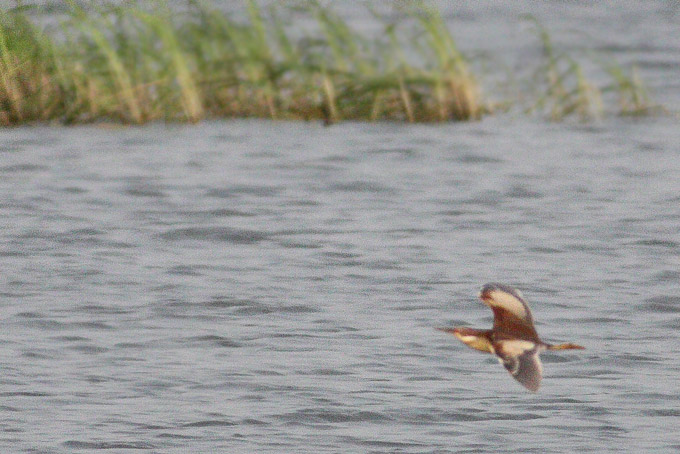
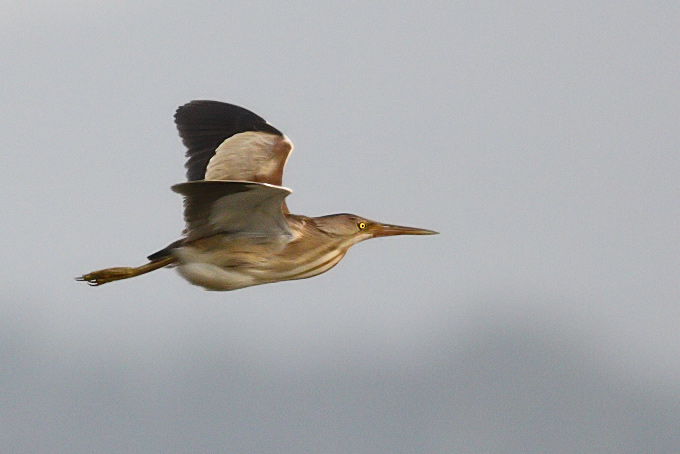
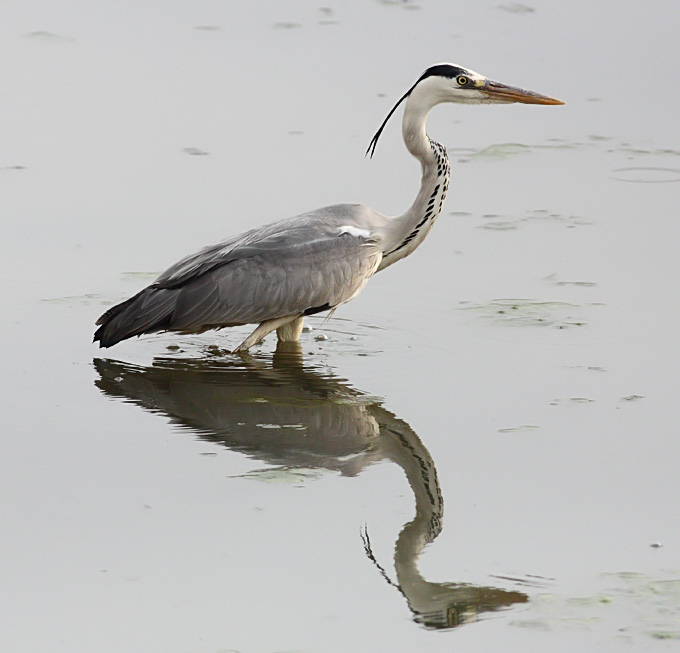
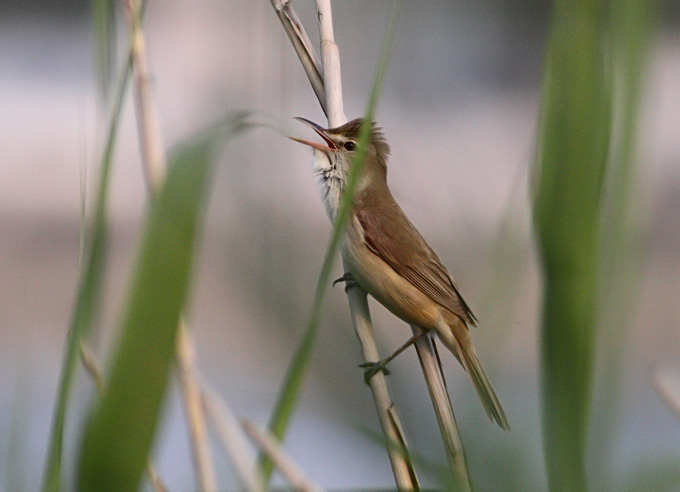
Songdo, June 5
Saunders's Gulls are busy carrying and fetching for their nearby colony.
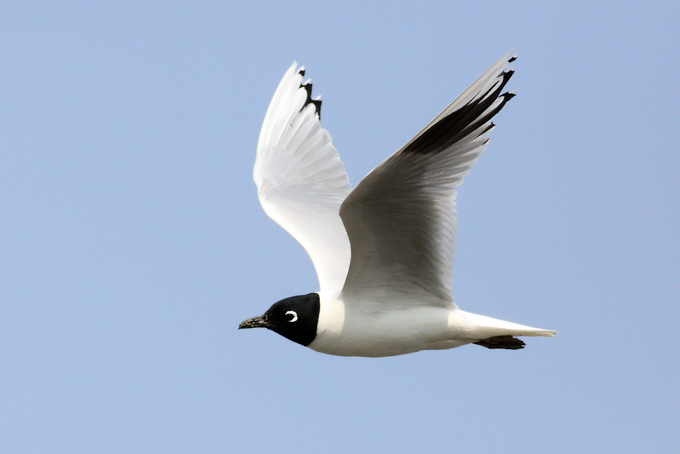
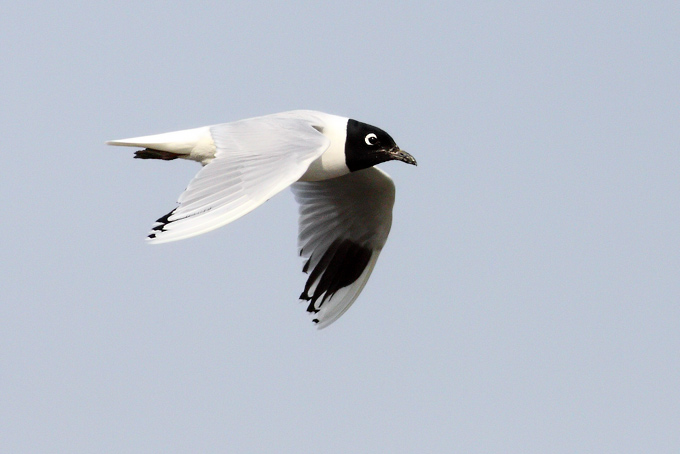
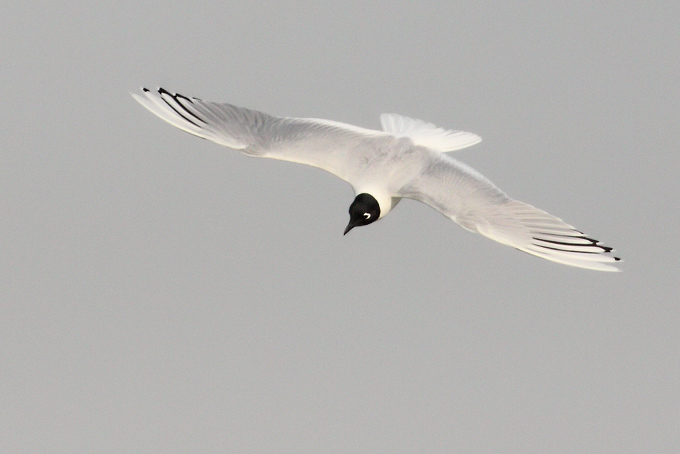
Northeast River, June 4
A morning only in haunts I last haunted last fall: among handfuls of Yellow-rumped Flycatchers, Black-naped Orioles, Greater-spotted, White-backed and Pygmy Woodpeckers, 3 Japanese Wagtails, 2 Dollarbirds, a Daurian Redstart and a pair of Hobbies, highlight was a pair of Ruddy Kingfishers.
